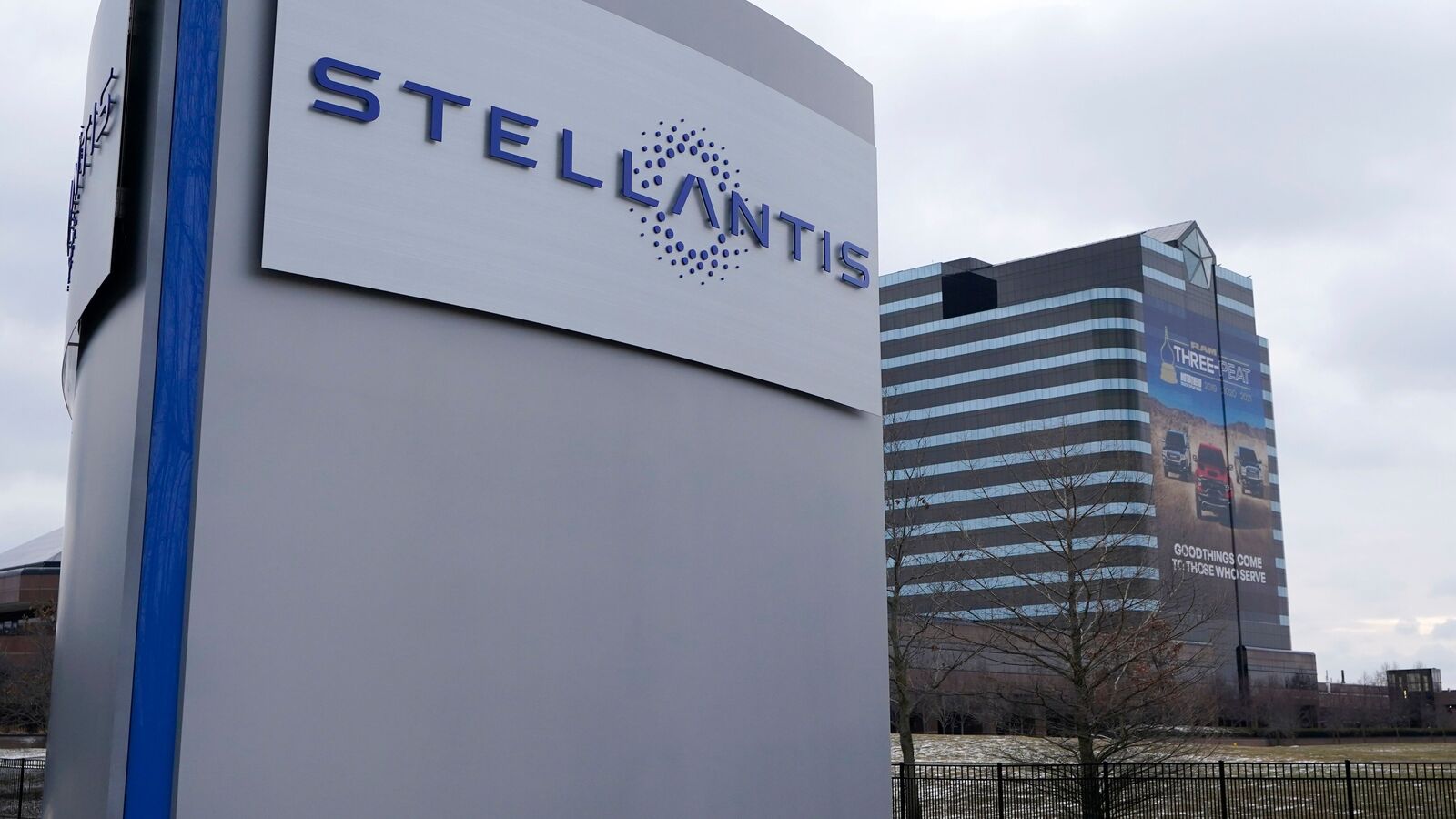“Tavares used to be a market darling, always under-promising and over-delivering,” said Florian Allain, senior portfolio manager at Mandarine Gestion and a Stellantis shareholder. “The first-quarter warning is the first big stumble in a trajectory that had been perfect until now.”
At an investor meeting on Thursday in Auburn Hills, Michigan, Stellantis broadly confirmed targets for this year, including a first-half operating return of 10% to 11% while saying industrial cash flow will be “visibly” below the same period a year ago. Cash flow will improve during the second half of the year on the back of a range of new models and cost cuts.
Stellantis shares fell as much as 2.8% in Milan trading. The stock has lost 7% this year.
Since the 2021 merger of Fiat Chrysler and France’s PSA Group, Tavares has lowered costs by pooling resources. Measures have included cutting the number of vehicle platforms to just four from 25 and eliminating jobs — at times, to the chagrin of governments seeking to protect workers.
The efforts largely paid off, with record returns putting Stellantis ahead of rivals like Volkswagen AG and Renault SA with the highest margins among mass-market manufacturers.
In recent months, however, the auto industry’s outlook has dimmed, with consumers weighed down by high borrowing costs and muted economic growth. Those issues supplanted supply-chain problems that choked production and inflated vehicle prices. Slowing demand for electric vehicles is yet another challenge, with the European Union’s decision Wednesday to levy additional tariffs on Chinese EV imports further complicating matters.
Tavares plans to meet these headwinds by cutting more workers in France, Italy and the US, and by launching a model offensive that includes the €23,300 ($25,044) Citroën ë-C3. A plan to soon introduce EVs co-developed with China’s Zhejiang Leapmotor Technologies Ltd. in several European countries won’t be affected by the EU’s decision, according to the company.
Stellantis executives on Thursday vowed to continue driving down expenses, for example on logistics and by sourcing more parts and materials in lower-cost countries. The push should lead to an additional €500 million in incremental savings in the second part of the year versus the first half, Chief Financial Officer Natalie Knight said.
“I read here or there questions about where are we in terms of cost-cutting, are we at the limits or not,” Tavares said during the event. “Well, it’s the same thing as asking do we have limits to our imagination.”
In the US, reining in vehicle inventory is among Stellantis’ most pressing issues. While US sales improved in May, absolute inventory still hit a record high of 423,000 units, according to Citigroup Inc. analyst Harald Hendrikse.
Tavares expects to keep Stellantis’ market share stable in Europe this year but warned of a “moderate decline” in North America, where the automaker faces challenges including a shift to smaller vehicles and issues at its factories.
“Manufacturing has been difficult in a couple of our US plants,” the CEO said. “They are not operating as they should and we have to fix that.”
Tavares offered a mea culpa, saying he should have moved more quickly to detect the “convergence” of various issues in the US, including inventory build-up and manufacturing problems.
“We were arrogant,” he said. “And when I’m saying that we were arrogant, I’m talking about myself. Nobody else. I should have acted immediately.”
Another cause for concern: at least four top executives have left the company in the past month. The exodus has included Tim Kuniskis, a 32-year Chrysler veteran who oversaw the Dodge muscle car and Ram pickup brands; and Jason Stoicevich, the senior vice president of retail sales who had tried to mend frayed relationships with US dealers.
“We now see signs of fatigue in staff turnover and concerns on how to reverse share loss,” Jefferies analyst Philippe Houchois wrote last month. “Carlos Tavares’ industry views are refreshing and inspiring, but he created an adversarial environment with suppliers, dealers, unions and public authorities.”
Tavares said he’s still looking to fill “a certain number of key positions” in North America and brushed off the idea that turnover is high at the company.
“Our attrition level is super, super low,” he said. “I don’t see anything that would represent a significant sign of mismanagement.”
While the company confirmed targets for this year, its 2030 revenue goal of €300 billion ($327 billion) is looking ambitious, according to Stifel analysts. This year, the carmaker’s sales are forecast at around €185 billion.
In Italy, Giorgia Meloni’s government has clashed with Stellantis over plans to move production to lower-cost countries. Last month, financial police seized dozens of Fiat Topolinos that carried the national flag despite the company assembling the cars in Morocco. Stellantis also renamed a new Alfa Romeo after Rome took issue with its plan to call the made-in-Poland SUV the Milano.
“I am not completely at ease with Tavares’ communication style,” Allain said. “I also don’t know to what point middle and top management are getting tired of his style and methods — there’s a big product rollout coming, and if you don’t have total adhesion of your teams, then it becomes a problem.”
First Published Date: 17 Jun 2024, 07:18 AM IST

